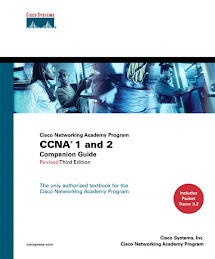 Director Robert S. Mueller, III has named Gordon M. Snow assistant director of the FBI’s Cyber Division. Most recently, Mr. Snow served as deputy assistant director of the Cyber Division. In this new role, he will be responsible for leading the FBI’s efforts to protect the United States against cyber-based attacks and high-technology crimes.
Director Robert S. Mueller, III has named Gordon M. Snow assistant director of the FBI’s Cyber Division. Most recently, Mr. Snow served as deputy assistant director of the Cyber Division. In this new role, he will be responsible for leading the FBI’s efforts to protect the United States against cyber-based attacks and high-technology crimes. “The FBI considers the cyber threat against our nation to be one of the greatest concerns of the 21st century,” said Director Mueller. “Protecting the United States against cyber crimes is one of the FBI’s highest priorities and, in fact, is the FBI's highest criminal priority. Gordon’s broad range of investigative and leadership experience will serve the Cyber Division well as they carry out this mission.”
Mr. Snow entered on duty as a special agent with the FBI on March 8, 1992. Upon completion of training at the FBI Academy in Quantico, Virginia, he was assigned to the Birmingham Division’s Huntsville Resident Agency. While there, he investigated violent crime, drug, civil rights, public corruption, and white-collar crime matters.
In April 1996, he was assigned to the Critical Incident Response Group as a member of the Hostage Rescue Team. During that time, he took part in several sensitive rendition missions; conducted terrorism assessments overseas with the Department of State; and was assigned to assessment, protection, and investigative support missions after the bombing of the USS Cole in Aden, Yemen, and the embassy bombings in Nairobi, Kenya.
Mr. Snow was promoted to supervisory special agent in the Counterintelligence Division’s Middle East Unit in January 2001. Two years later, in January 2003, he was assigned to the Detroit Division, where he supervised the foreign counterintelligence program and served as the SWAT program coordinator. In April 2005, Mr. Snow was appointed chief of the Weapons of Mass Destruction and Acquisition of U.S. Nuclear & Missile Technology Unit at FBI Headquarters.
In May 2006, Mr. Snow was selected as the assistant special agent in charge of the San Francisco Division’s San Jose Resident Agency. In that role, he had operational responsibility for the counterterrorism, cyber, white-collar crime, and violent crime squads; the San Jose members of the Joint Terrorism Task Force; the High-Value Computer Crimes Task Force; the Silicon Valley Regional Computer Forensics Lab; and the Monterey Bay Resident Agency. He also served as the SWAT program manager.
Mr. Snow was assigned to the Afghanistan theatre of operations as the FBI's on-scene commander for the Counterterrorism Division in June 2007. Following his return to the U.S., he was appointed section chief in the Cyber Division in January 2008, and detailed to the Office of the Director of National Intelligence, National Counterintelligence Executive. During that assignment, he and his staff led the effort in drafting the government-wide Cyber Counterintelligence Plan under Homeland Security Presidential Directive-23/National Security Presidential Directive-54, the Comprehensive National Cyber Initiative.
In January 2009, Mr. Snow was appointed as chief of the Cyber Division’s Cyber National Security Section and the director of the National Cyber Investigative Joint Task Force. In November 2009, he was named deputy assistant director of the Cyber Division.
Mr. Snow is a native of Detroit, Michigan. He graduated from the University of Michigan, Ann Arbor, with a B.A. in English. He received an M.B.A. with an emphasis in finance from Virginia Tech in 2001 and a J.D. from Catholic University’s Columbus School of Law in 2006. Prior to joining the FBI, Mr. Snow served in the United States Marine Corps for more than 10 years, as both an enlisted Marine and as an officer.
This post is excerpted from the FBI Press Release, Gordon M. Snow Named Assistant Director of FBI Cyber Division, April 23rd, 2010.





